When your roof is leaking and your feet go through the floor boards, it may seem clear enough that your home won’t stand up to a hurricane or some other large scale disaster. On the other side of the equation, even if your home is newer, or you rent an apartment, that doesn’t mean you should rely exclusively on your current home during a major crisis.
Regardless of your current living situation, there are many times and places where an external shelter located on your property or near your home will be of more use than expected. Here are some ways you can build an emergency shelter on a limited budget.
Understand the Building Needs for Different Crisis Scenarios
Before you decide to try and build the cheapest emergency shelter possible, it is important to know which kind of emergencies you expect to get through while residing in the shelter. Have a look at some of the most common scenarios and how they may or may not change your building plans:
- The best shelter for surviving a nuclear crisis will be one located underground. Just make sure that earth covers the top of the shelter as well as all around it. Underground shelters will also be the best for tornadoes.
- Since water from hurricanes can sink deep into the ground, you may be in more danger underground than above. A shelter that will survive a hurricane must be able to withstand heavy winds and rain. Look into shelters that have rounded or dome like shapes as they will offer less resistance to the wind. This, in turn, means that it will be harder for the wind to pick up the shelter and destroy it.
- Gas, disease, and similar attacks require a shelter that is as waterproof and air proof as possible. While it does not matter if the shelter is above ground or below, you will need to be able to filter the air and enrich it with oxygen. Ideally, shelters for these kinds of emergencies plus nuclear crisis should also include a decontamination area. If you go outside, it will be very important to have a place where you can remove your clothes and remove debris and other possible pollutants from your skin before entering the shelter.
Cheap Materials For Building Shelters Near Your Home
Chances are, you will be surprised how natural materials or ones you consider to be “junk” can be repurposed into making a durable emergency shelter. Here are some materials that you more than likely have on hand right now, can find abandoned with little effort, or can build up in a fairly short amount of time.
As you consider these items, remember that building a viable shelter isn’t just about the materials, it is about how you assemble and support them.
- Old tires – old tires can be cut into any number of shapes that can be used to cover holes or build a waterproof layer. They can also provide flexibility to the shelter that may be of use during earthquakes, or when building an unusual design.
- Plastic water bottles – of all the possible materials for building an emergency shelter, this one is the most overlooked, yet the most valuable. In fact, today, people are building full scale homes using plastic water bottles filled with dirt, sand, or water. They have excellent insulative properties and lend just enough support to other materials that would be difficult, if not impossible to turn into a permanent shelter.
- Metal food cans – as with tires, you can use tin cans for covering different areas, as well as for strength. Do not forget that you can always cut these cans open, lay the flat, and then fold them into strips. This can make them useful for supporting different parts of the shelter as well as holding parts together. Metal food cans are also very useful for making solar heaters that can provide warmth for your shelter and hot water.
- Canvas bags – when filled with sand or soil, the canvas bags are some of the most useful things you can use for building an emergency shelter. They are easy to stack up, and can provide a good bit of protection from the elements. They are also the best building material to shield from bullets.
Cost Cutting Without Losing Quality
When you are on a very tight budget, even a few extra dollars can be hard to eke out of your budget. For example, even though smaller sized water bottles may work well for an emergency shelter, there is no getting around the fact that buying water by the gallon is cheaper.
How To Build a Small Bunker in Your Backyard with $400
It does not pay to buy larger bottles in order to try and save money because your emergency shelter will not be as sturdy or reliable. This is just one area where cost cutting would create more problems than it solves.
On the other hand, there are some other places where you can safely cut costs without losing the benefits you want most from the shelter:
- Try to build a smaller shelter or break it up into smaller modules. If you build the shelter in add-on modules, you may also improve the overall strength of the shelter, plus extend the cost of building the shelter over a longer period of time.
- Canvass the local area to see if others have useful trash that they are willing to give you. You can also check out sites where high volumes of tires and other waste tend to collect with little or no attention from others. Abandoned lots, and other areas may be a good place to find items that can be repurposed for your shelter at no cost.
- Look in second hand and thrift stores for canvas items that you can sew into bags for making sand bags.
- Take a careful survey of natural materials. Even if you can’t find a beach or plenty of sand, do not overlook the soil in your back yard for filling plastic bottles or canvas bags.
- Keep an eye on local public auctions. You never know when useful building materials may become available from one or more locations.
Where to Hide the Shelter
Hiding your shelter can be difficult for any number of reasons. To begin, people are bound to notice that you are doing something unusual. While keeping your building tasks out of plain sight will help with this problem, there are some others to consider.
Never overlook the possibility of electronic surveillance means during the building process and after the shelter is built and stocked with supplies. In fact, before you even buy or begin saving materials to make the shelter, you should make sure you know what kind of methods may be used to locate the shelter.
From there you can amend the design and then figure out the best location for hiding it. Here are some basic rules for making your shelter easier to hide:
- Keep the shelter small or have a series of small shelters spread out so that no single site gains attention.
- Make sure the shelter is properly disguised based on the surrounding terrain
- Study how time of day, lighting effects, and weather patterns may reveal the existence of the shelter
- Have multiple access points so that you can get from any area on the property to the shelter without being seen or observed
- Use “hiding in plain view” with caution. You can use different shapes or several other methods to ensure people see the structure, but either don’t recognize what it is, or place no importance on it. As with any other kind of disguise, the shelter should blend in and look so normal it is forgotten. If you decide to go in the opposite direction, the shelter should look so strange it will be ignored as a point of blocking out irrelevant information.
Best Ways to Get to the Shelter in an Emergency
When disaster strikes, there is nothing worse than knowing safety is just a few feet away, yet you have no way to get there. In this case, if your house is no longer safe, you must still have a way to get to your emergency shelter and the supplies that will get you through the disaster. Here are some possible ways you can use to get to the shelter:
- Make use of underground tunnels. Even if you have only a crawlway under your house, it will be worth your while to dig an underground tunnel that comes up in your emergency bunker. It does not matter if the shelter is above ground or below. If possible, you should make it your business to have access to the crawlway in each room on the downstairs level of your home. You should tunnel access points throughout the yard. At the very least, if you find a way to get outside, you can still use these entry and exit points to get to your shelter.
- If your shelter is above ground, you may want to try accessing it directly instead of using an underground tunnel. This must be done so with caution so that no one sees where you are going or notices any kind of foot traffic leading to the shelter. When using above ground travel methods, do not forget to take advantage of trees or other objects that create blind spots. There are many ways to get from Point A to Point B without being seen if you know how to place objects around your yard, and then use them for cover in a time of need.
- Tall trees in your yard and rope can also be used to move from limb to limb until you reach an appropriate access point.
Dugout Shelters
When it comes to saving money on an emergency effort, dugout shelters offer some of your best options. That being said, underground bunkers or shelters can be extremely dangerous if they aren’t built correctly or something else causes you to become trapped below ground.
You should have at least one underground shelter on your property so that you can use it if the situation calls for it.
Today, there are many different designs of dugout shelters to choose from. You can build something simple as a one room underground cavity braced with wooden beams. Alternatively, you can tunnel and go to different depths to create multiple rooms and structures.
As long as the soil in this area perks well and is solid, you should be able to build a fairly good shelter.
During the process of planning to build a dugout shelter, do not overlook digging deeper into bedrock. This is very important if the soil is very shallow and there is no other way to dig down deep enough. While it may cost a bit more to dig through the bedrock, reaching this level can open up opportunities to increase the stability of the shelter.
Dugout shelters can also be useful when it comes to saving on other parts of stocking and maintaining the shelter. For example, while you are choosing a location for the shelter, you should make sure you know about how underground water moves around and through your property.
Depending on the area, you may be fortunate enough to find an underground stream with clean water nearby, or some point where you can easily access the water table. Since clean water is necessary for both short and long term survival, being able to harness an underground source in your emergency shelter will be a huge advantage.
Fortified Living Brush Shelter
When combined with a secondary underground shelter, you will find that most of your emergency needs will be met more easily than if you built just one emergency shelter from some other material.
Typically, you will find that making shelters covered with still living trees, or bushes will also cost less than using other kinds of materials. These shelters have a number of other advantages that you might want to consider:
- As you may be aware, homeless people are often drawn to derelict buildings or ones that seem to be abandoned. These very same people, however, aren’t likely to dig into a bunch of bushes covered in poison ivy or something else that looks equally unpleasant. By the time you factor in people that fear contact with insects in shrubs, you can have some peace of mind knowing that a living brush shelter will be overlooked.
- Today, some preppers believe our society is likely to collapse at any moment. Others may think we have some time yet. Regardless of where you are on this continuum, there is a good chance that, as a homeowner, you are also paying property tax. Unlike recognizable shelter, you are likely to find that the tax assessor isn’t going to recognize a bunch of shrubs as living space let alone a building. Therefore, you won’t have to worry about a tax hike, securing permits, or other problems that can come up when building a more conventional bunker.
- Living brush shelters can also hide plants that can be consumed for food and medicinal needs.
Sandbag and Concrete Shelters
As noted earlier, sandbag shelters are remarkably durable and can withstand many different kinds of attacks. No matter whether you are concerned about bullets or keeping out rioters, the walls of a sandbag shelter can keep just about anything out. In fact, even if you decide to build some other kind of shelter, fortifying it with sandbags will be to your advantage.
Insofar as cost, if you live near beach or have some other access point to free sand, it will cost you almost nothing to build this shelter type.
Using Plastic Bottles and Other Recyclable Materials
There is no question that a growing number of people believe some kind of major disaster is looming. At the same time, actively engaging in prepper activities and taking concrete steps can be both expensive and time consuming.
From this perspective, it is more than likely many people know they need to put building an emergency shelter as a top priority. However, like being trapped in a nightmare, it may be impossible to start working towards this goal.
Once you find yourself in a catastrophic situation, it is a good idea to make sure you know how to build a shelter from what others see as junk. While others are busy fighting and killing over more obviously useful resources, you can obtain things like used plastic bottles and turn them into a viable shelter.
In their simplest form, all you need to do is fill the bottles with dirt or water, and then use mud to seal the bottles together to form walls and ceilings.
At the very least, if you don’t feel drawn to building some other kind of shelter you can try this one as the basis for a greenhouse or part of a gazebo. The important thing is to know how to build walls using this construction material so that you can make use of it in a time of need when you have no choice but to make building an emergency shelter your top priority.
Sustainable Mobile or Knock Down Shelters
Aside from buying a tent that you can put in your yard for emergency shelter, it is also possible to build wall units that are collapsible and can be moved around with relative ease. For these shelters, look at different kinds of polymers or other lightweight materials.
If you need a larger shelter with a bit more substance than a tent, designing a knock down shelter may be a good option for you. When combined with brush piles or other natural disguises, the mobile nature of this shelter can provide some unexpected advantages.
That being said, do not forget that your supplies and stockpile will most likely need to be housed somewhere else. No matter how fast you can disassemble, pack, and move the main shelter, it is never a good idea to have to waste time on items inside can cannot simply be folded up and put away.
If you own a car, this is one of the easiest and cheapest things to turn into a place that you can turn to for emergency shelter. Just make sure that you give some thought to maintaining your privacy and preventing people from realizing that you are living in the vehicle.
Emergency shelters that will last form months to years can be built at a low cost if you focus on some creative or unusual options. You can also go with more conventional underground bunker designs and add fortifications as your budget allows.
Regardless of the first shelter type that you choose, it is also important to be ready to build a second one so that you can address as many emergency needs as possible without spending a fortune on just one design.
This article has been written by Carmela Tyrell for Survivopedia.


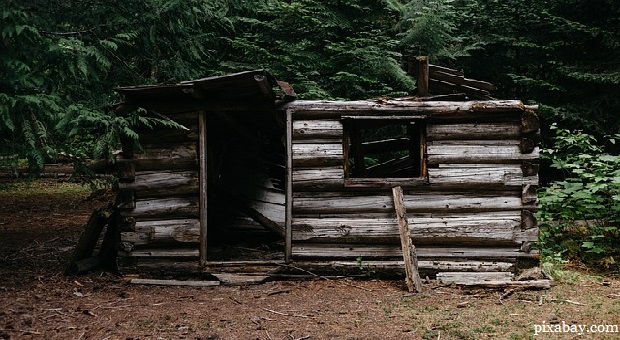
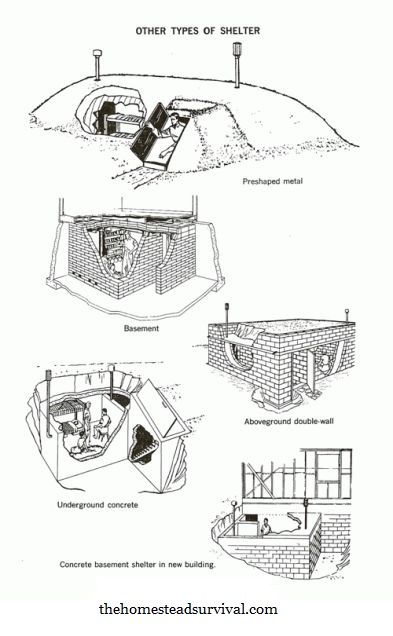

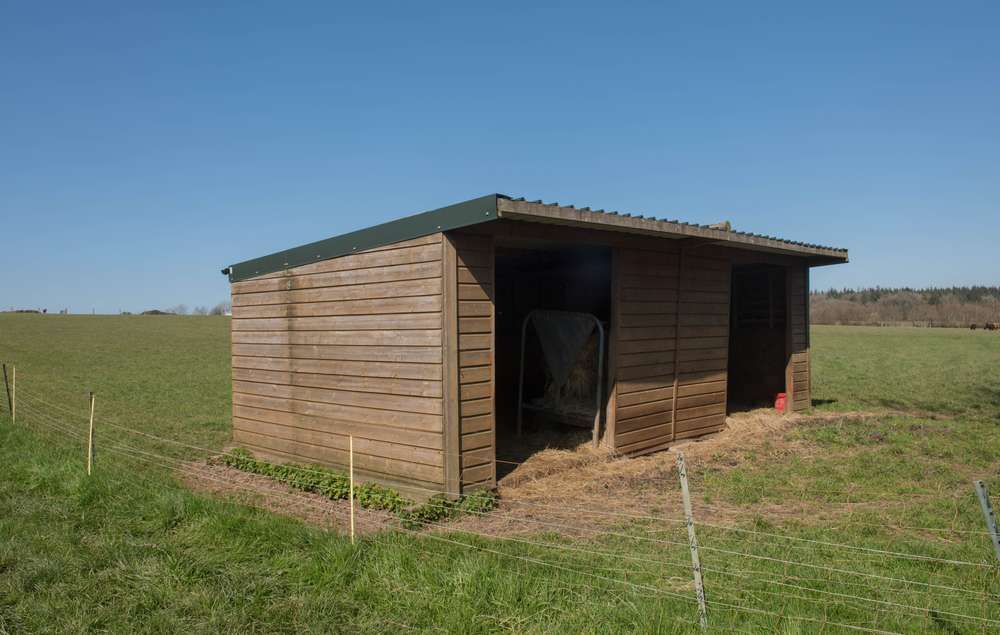
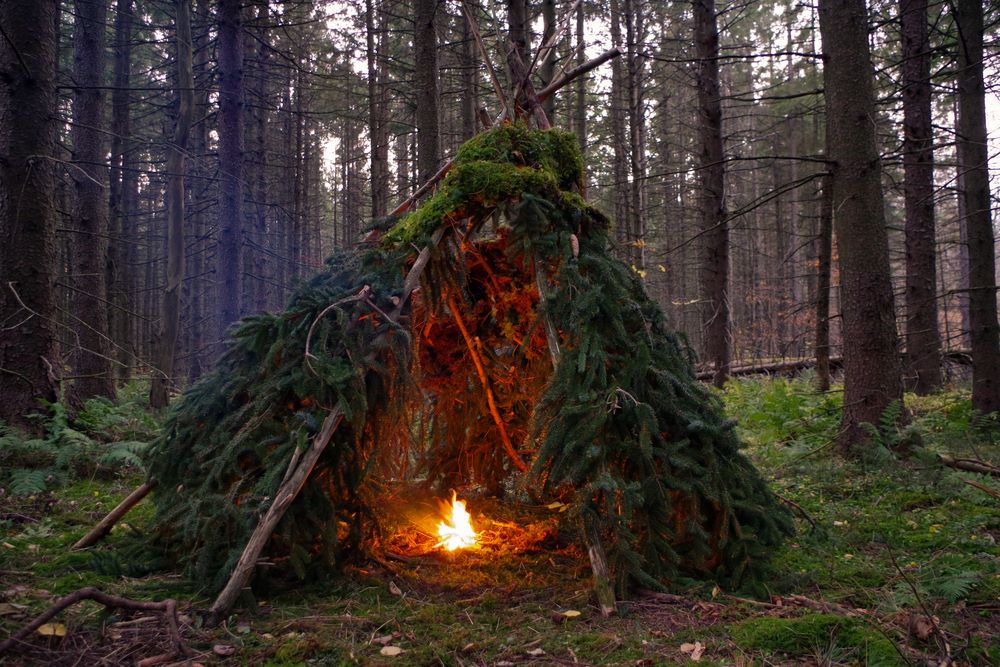
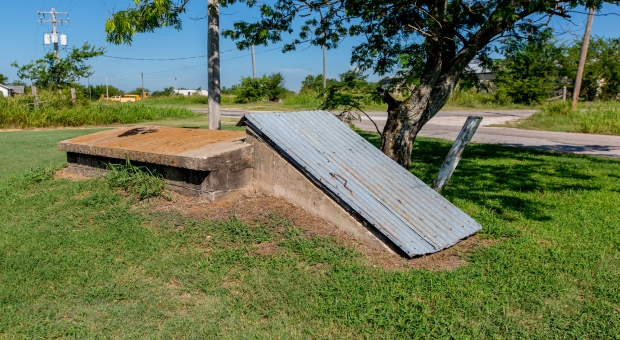


Henry | January 22, 2018
|
Your chances of survival also depends on a two year food and water supply, and how to rebuild that supply every year by farming, gardening, dehydrating, etc.
Larry | January 22, 2018
|
A few years ago, i saw a video on an inflatable concrete tent-like structure that seems viable in certain circumstances. It was a british product, but they are probably more widely available now if you google it. Here is the original link that I saved. http://www.wimp.com/concretetents/ maybe it would work in some people’s prepping plans.
EL oso | January 24, 2018
|
How about a corrugated culvert pipe as is used under road construction. They come in almost any length and up to 10 feet tall.easy to weld to and will support litterly tons of weight.
tw sLACK | January 25, 2018
|
Well with any underground structure that is water proof you have to worry about condensation. It does not take very long for the dampness to become overwhelming. As anyone who has spent time in a camper during the winter can testify, the amount of condensation just from human breath can for droplets on the walls and run down and make bedding become wet and i would think mold would be a problem. Add the fact that water needs to be boiled for food prep and of course sanitary facilities would add to the dampness problem.
Brian | January 23, 2018
|
Well researched and written.
Brings up valid points to think about in preparation & planning.
Good basis for further research to expand on.
My its seems we are reverting to the old Cold War preparation?
Thanks for sharing !
Clergylady | January 23, 2018
|
I like,burried or half dugout structures with heavy limbs or structure roof above ground then a layer of clay, then dirt, then brush OR bushes. It takes the clay under the dirt to keep out water unless you have some other serious water proofing.
Here adobe is a common building material or its the morter for rocks. Pretty colored GLASs bottles are often incorporated INTo cob walls for color and light. Cob is formed into fireplaces and ovens. Pretty twisted JUNIPer trunks are INCORPORATED. SOme are As much art as practical structure. You can go simple or ornate.
If it were to be for secretive shelter I’d want to go very plain and have the brush covered or Bush growing low MOUNDEd over roof. A FIRE pit in the floor or your camp stove to be able to cook or heat water.
If you’re able, go all underground with a Warren of tunnels and nest spaces for sleeping and living areas. Do remember tunnels must be BRACed against collapse. Have several entrance/exits. STORE food cooking vessels, clothing, and sleeping bags in assorted areas. Build doors to close off tunnels that will look like deadends to the tunnels. Have more alternate places. Make openings in well covered places. Be invisible.
Make sure to have places from which to watch your shelter and be on the lookout or pull in the door and stay invisible. Personally I’d want to know for sure when my shelter is clear of any threat. The ability to move UNSeen and yet see the area could be lifesaving. If the placed looked to be UNUsed all the better.
tw sLACK | January 25, 2018
|
My understanding is that pond clay is the best water proof substance. You can plaster it on the outside before adding dirt over it. The precaution to take is to make sure there are not stones in the layer of soil put over the clay layer.
Trecker | January 24, 2018
|
I have not been able to find any information on tunnelIng and bracing
Clergylady | January 25, 2018
|
tunneling requires a lot of digging. Bracing can be AS simple or as ELAborate as you care to go. Old miners used to place two upright tree trunks or large limbs upright with a third ONE across the top. These WERe placed every few feet. It just HELPEd prevent cave ins.
I like the LArge culvert suggestion. They are strong enough to drive on. Weld on end closures as desired. Make an entrance. Make a FLAT floor with storage hatches. Build bunks and CABINETS to fit the round sides. You could have a comfortable space.
What ever I finally settle on won’t be expensive but MUST be comfortable. I’d actually CONSIDERED burying a camper that sleeps 6. With a FRAMework over it for strength it could work in this dry country. Mound the dirt SOME for drainage, make a hidden entrance. It’s a thought.
A store room with a basement and both hidden inside and outside ENTRANCES would be easy and practice as an addition on A home.
Just be wise and don’t build a TRAP instead of a SURVIVAl shelter. A couple of ways in and out with good cover . More if you can do it. More than one is better.
I’ll have some simple ones and perhaps with time something better. At minimum a SEcretive way IN and out of my home with BOBS handy.
EL oso | January 25, 2018
|
In regards of what you wrote about large culvert, all that works very well